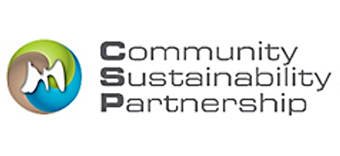Darwin Baas Finds Innovative Solutions for a Sustainable Community
With a 25-year-long career in conservation, spanning both the public and private sectors, Darwin (Dar) Baas brings a collaborative approach to solving West Michigan’s waste management channels.
The director of the Kent County Department of Public Works said he always considered himself a conservationist, even at a young age. He grew up in Georgetown Township, back when it still was largely rural, and spent most of his childhood outdoors.
“I was very in tune with nature — there was a creek nearby — and just really enjoyed the outdoors,” he said. “I couldn’t wait to get up in the morning. … I remember enjoying nature immensely.”
Baas took his love for nature with him throughout his early life but didn’t know where it would lead him. He said he never considered himself a hunter, though he would bag the occasional small game. He never saw himself as a scientist either, although he excelled in both high school biology and chemistry.
During his college years, he struggled to find a major before eventually pursuing an undergraduate degree in business. But it was a single class in natural resource management, he said, that solidified his intent to be a serious conservationist.
In the class, students were given writing prompts about natural resource management, and the professor gave awards to the best paper. Baas, who was a freshman at the time, won a competition in a class full of sophomores, juniors and seniors.
|
DARWIN BAAS
|
“I think it was just as much about my writing skill as it was my passion for the topic,” he said. “And maybe it was that professor’s influence and having seen things that could have been done better, and he certainly instilled that in me.”
During the time he was in college — in the late 1980s — Baas said there was little attention given to stewardship when it came to the extraction of natural resources. Practices like timber management existed but were not prominent.
Baas said his professor inspired him to provide practical solutions, not only in his career but also with programs geared toward educating people on proper resource management.
“It doesn’t have to be complicated, even if we live in a complicated world,” he said. “We have an opportunity to change the trajectory of what we’re doing.”
Baas’ first job out of graduate school was as a resource recovery specialist with Ottawa County. His main responsibilities were to promote education for residents and businesses on recycling and to manage household hazardous waste.
Most of his hazardous waste management involved working with what is now the Michigan Department of Agriculture and Rural Development to help farmers safely dispose of leftover pesticides.
“I remember yet to this day the incredible volume of particular pesticides, which serve a role, but gallons upon gallons of drums of DDT and chlordane,” he said.
DDT and chlordane were found in the early 1990s to have powerful residual effects on the environment. Baas developed programs to enable businesses and residents to turn in these harmful chemicals, as well as loose syringes, old medications and used oil drums.
Baas also worked closely with private companies to repurpose their waste. The Zeeland-based office furniture maker Herman Miller, at the time, wanted to compost its industrial sawdust.
The company and Ottawa County reached out to Shady Side Farm to blend its poultry manure with the sawdust to attempt to create an organic fertilizer. Baas said, though the practice is common sense now, it was cutting edge at the time.
“Today, you can go to their website and look at their brochures on sustainability … they were on kind of the leading edge of that and developing all of those things back in the ’80s and ’90s, and that’s still very much who they are today,” Baas said.
Baas was hired into the Kent County Administrator’s office in 2004 as a management analyst, but he was predominately hired, he said, to be the environmental project manager for Millennium Park in Grand Rapids.
The Millennium Park project began in 2000 to recover 1,500 acres of what was then heavy industrial area. Though now marked with nature trails, fishing venues, basketball courts and picnic gatherings, the land was once littered with disused facilities.
“There was mining operations out there — gravel, sand, gypsum. There were two drywall manufacturing sites. There were oil wells from the 1940s, and a couple of them were leaking,” Baas said.
Baas spent three years alongside the Kent County Parks Department to reclaim the land as a natural resource and redevelop it for recreational use.
After spending the majority of his career in government, Baas moved into the private sector, serving as general manager for Valley City Environmental Services and then serving as head of the Grand Rapids division at Young’s Environmental Cleanup.
Although it was a different structure, Baas applied the experience he developed working for Kent and Ottawa counties to private waste removal and transportation.
“There again, very practical solutions — you have a truck tanker that was in an accident, and its saddle tanks are leaking diesel,” he said. “We were called in by the fire department or state police to come in and clean and contain and get that taken care of.”
Baas came back to Kent County as a division director for the Department of Public Works in 2014 and became director of the department a year later.
“That’s where I’ve kind of taken the culmination of these 25 years of experience and said, ‘OK, Kent County has a fleet of facilities,’” he said. “We have done some really good things … but let’s begin to have a conversation about where we’re really at. How well are we recycling?”
Baas said the current model of waste management is outdated, explaining waste collection and landfill operations don’t look very different from how they did in the 1960s, ’70s or ’80s.
While Kent County, in his opinion, has been very progressive with the implementation of waste energy and single-stream recycling facilities, it still operates a transfer station and landfill where several tons of useful materials are discarded.
“We (Kent County) built the first synthetically lined landfill in the state of Michigan. That’s North Kent Landfill,” he said. “There are other landfills around us that are well-engineered facilities, but it’s old technology … we continue to just throw things away.”
The construction industry alone dispenses large amounts of untreated wood, Baas said, which could be donated to Habitat for Humanity for its operations.
Baas said Kent County generates 2.1 million cubic yards of refuse a year, enough to fill Ann Arbor’s Michigan Stadium twice. Three years ago, it was 1.8 million, and two years ago, it was 1.9 million.
However, he was quick to praise what the county has done during the last 20 years. Since opening its waste energy facility in 1990, it has made electricity out of 5 million tons of refuse and recycled 130,000 tons of scrap steel, enough to build the Mackinac Bridge.
“We don’t do everything right, but we make a lot of good decisions,” he said.
The DPW has a strategic goal to exit the landfill business by 2030, but Baas said the county is falling behind in its implementation if it wants to meet that goal or continue to call itself a sustainable community.
“We do recycle, but we’re not doing it nearly as good as we think we are. We have a tremendous volume of good reusable material that could either be reconverted or utilized, and we’re choosing to put it in a landfill.”
The strategy includes the implementation of a sustainable business park adjacent to the South Kent Landfill, a project the Business Journal has covered previously. Recently, the DPW issued a request for information from businesses interested in operating their facilities in the park.
“Europe certainly is way ahead of us,” Baas said. “We’re having these conversations in the States. But in West Michigan, I’m convinced we can be a world-class leader. And with the private-public collaboration here, if we get the right people in the room … and the economic resources we need, we can have a tremendous impact here.”
Retrieved from Grand Rapids Business Journal: http://www.grbj.com/articles/90383-inside-track-for-the-love-of-nature



